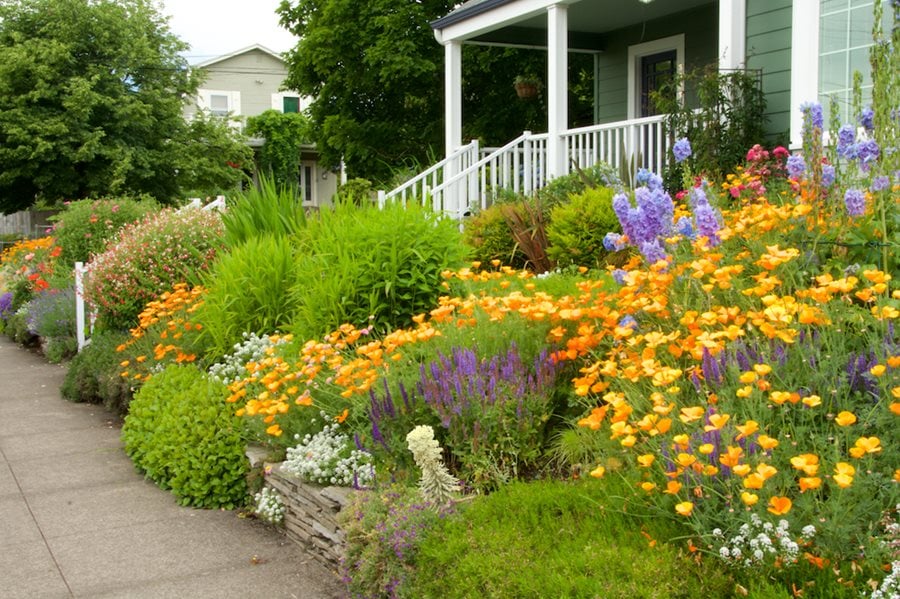Finding the best materials for Steep hill landscaping that lasts.
Finding the best materials for Steep hill landscaping that lasts.
Blog Article
Accomplish a Stunning Outdoor Oasis With Thoughtful Steep Hill Landscape Design Solutions
Transforming a steep hillside right into a fascinating outdoor oasis offers distinct difficulties that call for innovative landscaping solutions. Strategies such as terracing, the installation of maintaining wall surfaces, and the selection of native plants play essential roles in this process. In addition, integrating water attributes can additionally boost the landscape's attraction.
Recognizing Steep Hill Challenges
Landscape design on steep hillsides presents unique difficulties that call for mindful factor to consider and tactical preparation. The disposition of the surface can result in issues such as soil disintegration, water drainage, and restricted availability, every one of which must be addressed to create a practical and visually pleasing outside room.
Among the primary interest in steep hill landscape design is disintegration, which can result from heavy rains or incorrect water drainage. This not just affects plant health however can additionally endanger the stability of the incline. Applying effective disintegration control actions, such as growing ingrained greenery or using compost, is essential in protecting the stability of the landscape.
Designing With Terracing Methods
To minimize the difficulties presented by high hills, integrating terracing strategies can be an efficient service. This layout method changes a sloped landscape into a series of flat, level locations, creating a visually striking and practical outside room. Terracing not just assists to protect against dirt disintegration yet also assists in far better water drain, which is crucial in keeping the wellness of plants and the stability of the hill.
The usage of native plants on each degree can enhance biodiversity, promote sustainability, and decrease maintenance needs. In addition, integrating paths in between terraces can boost ease of access and encourage exploration of the landscape.
Terraced gardens can offer multiple purposes, including veggie manufacturing, decorative displays, or outdoor seats areas. By using materials that mix sympathetically with the surrounding setting, the terracing can boost the overall visual charm of the home. Ultimately, thoughtful terracing transforms high hills right into practical, attractive rooms that welcome communication and enjoyment.
Carrying Out Maintaining Walls
When faced with the obstacles of steep terrain, carrying out retaining wall surfaces can offer both architectural support and aesthetic enhancement to a landscape. These wall surfaces offer to stop soil erosion, support slopes, and produce flat areas for horticulture or recreational use. Steep hill landscaping. By successfully taking care of water overflow and decreasing soil movement, preserving wall surfaces protect your landscape financial investment while enhancing security

Expert installation is essential to guarantee the long life and performance of keeping walls. Proper water drainage systems should be incorporated to alleviate hydrostatic pressure, protecting against structural failure. Consulting with landscape experts will guarantee that the layout lines up with your overall vision while adhering to local laws.
Picking Native Plants
Selecting native plants for your landscape layout provides numerous ecological and aesthetic advantages. Steep hill landscaping. Native plants are adjusted to the local environment and dirt problems, calling for much less water and maintenance compared to non-native varieties. This versatility not just saves sources yet likewise promotes a healthier environment, as indigenous plants support regional wild animals, consisting of pollinators such as and butterflies
Integrating native vegetation right into your high hill landscape design can boost dirt security, lowering disintegration and promoting a balanced community. Ingrained indigenous plants help anchor the soil, making them ideal for sloped areas. These plants usually exhibit vibrant shades and varied textures, developing a visually attractive landscape that balances with the surrounding atmosphere.
When choosing native plants, consider their growth routines, seasonal interest, and important site compatibility with various other species. Grouping plants with comparable water and sunlight requirements can cause a more natural layout, while likewise simplifying maintenance. By selecting indigenous plants, you not only grow a sustainable exterior sanctuary yet also contribute positively to the neighborhood biodiversity, ensuring that your landscape grows for several years to come.
Incorporating Water Functions
Integrating water features right into your high hill landscaping can substantially improve both the aesthetic appeal and eco-friendly functionality of the area. The audio of moving water creates a serene environment, while visually, it can offer as a focal point that attracts the eye and adds depth to the landscape.
When choosing water features, take into consideration alternatives that match the natural shapes of your hillside. Waterfalls, as an example, can cascade down the incline, producing visual interest and promoting healthy and balanced drain. Fish ponds can likewise be incorporated into the design, learn the facts here now urging regional wild animals and offering environments for various types.
In addition, the placement of plants around these functions is important. Indigenous aquatic plants not only improve the beauty of the water feature however additionally contribute to its environmental balance by filtering system toxins and giving food for regional fauna.
Maintenance is another vital factor; guarantee that your water function is developed for very easy maintenance. A properly constructed feature will require very little intervention, enabling you to take pleasure in the elegance and serenity it uses without excessive labor. Ultimately, attentively incorporated water attributes can transform your steep hillside landscape into a fascinating outdoor oasis.
Conclusion
In conclusion, changing a high hillside into a gorgeous outdoor sanctuary requires thoughtful landscaping methods that deal with disintegration control and accessibility. The assimilation of terracing methods, the implementation have a peek at this site of retaining wall surfaces, and the option of native plants are essential elements of effective style. Additionally, integrating water features improves both aesthetic appeal and drain efficiency. With cautious preparation and execution, high hills can end up being calm retreats that provide both capability and visual joy.
Report this page